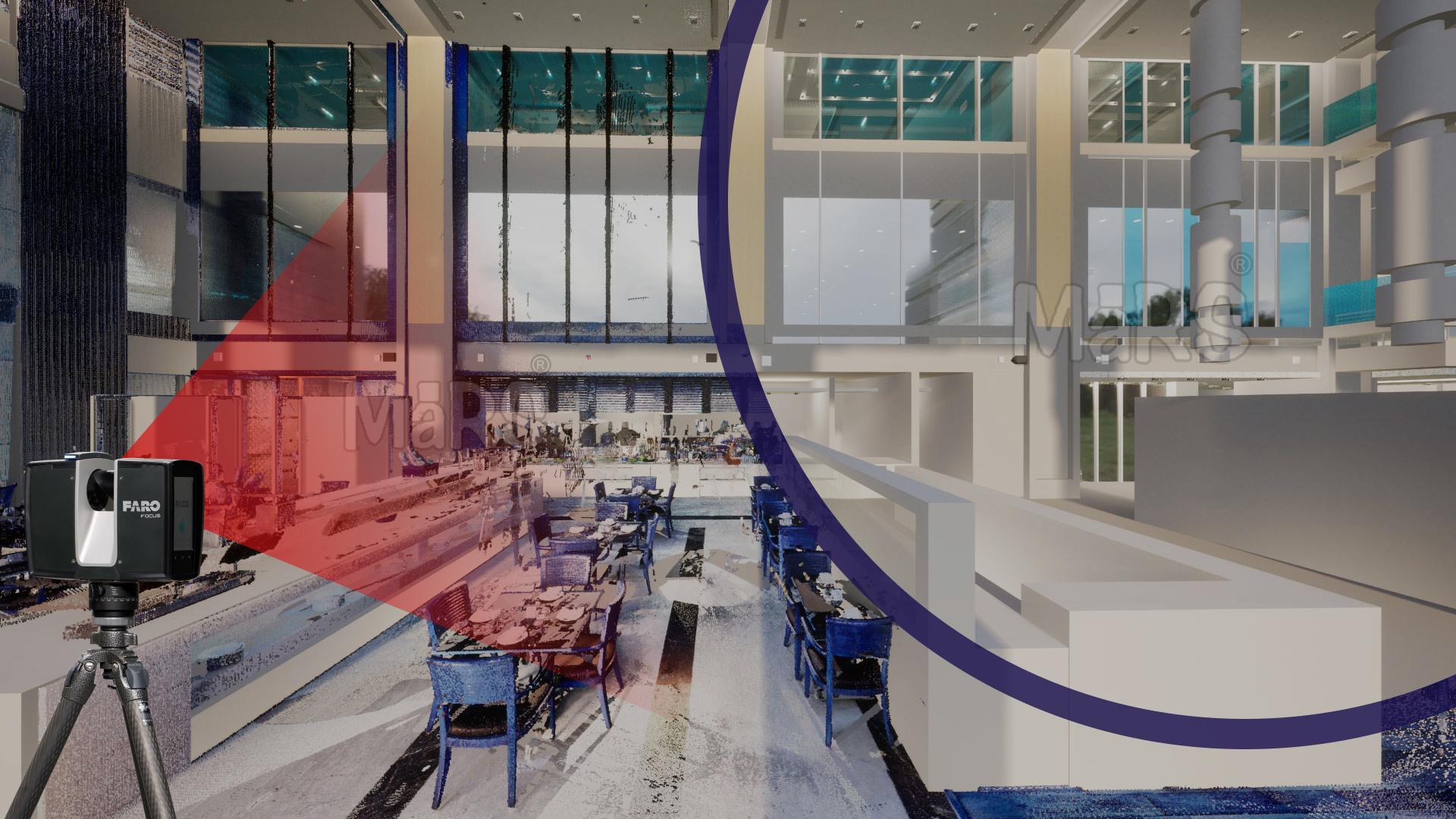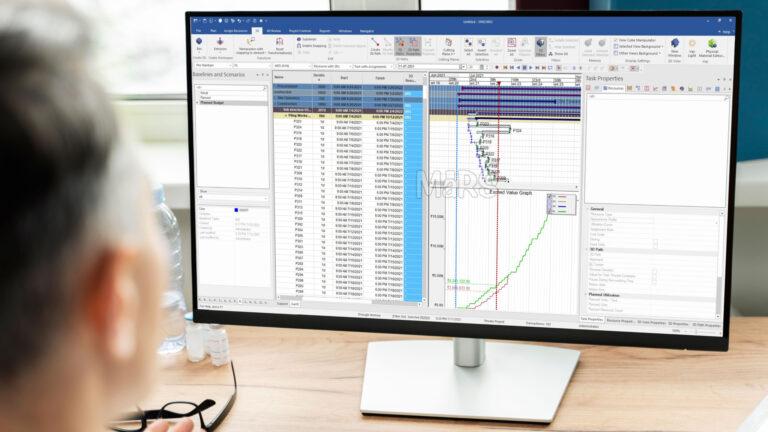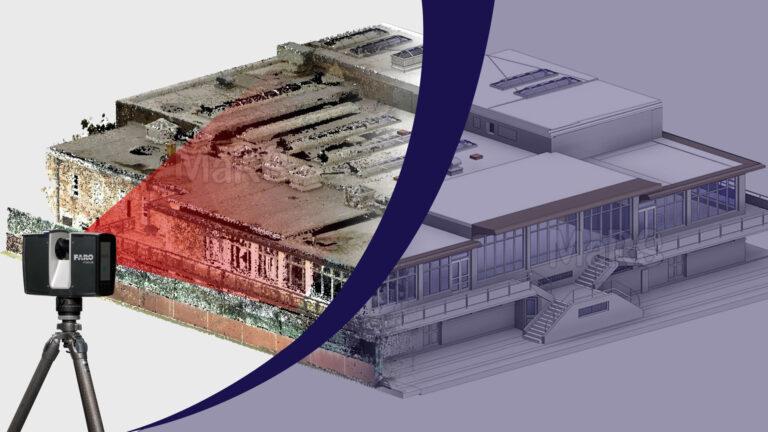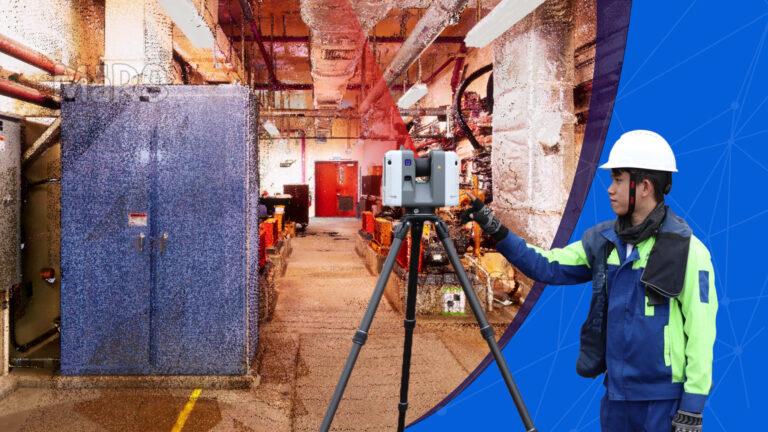The construction industry has been transformed through Scan to BIM by bridging the gap between the physical and digital worlds. In this transformative process, the as-built conditions of a structure are captured via laser scanning and converted into a comprehensive BIM from which point cloud data emanates. Executing such multifaceted projects will necessitate a well-coordinated team of professionals with diverse expertise. This article highlights the critical roles, responsibilities, and collective project success contributions of key personnel involved in Scan to BIM.
Roles of Key Personnel
Effective collaboration among different specialists is at the core of any successful Revit Scan to BIM project. Individual members have their own unique field experience which adds value to the general outcome of every project.
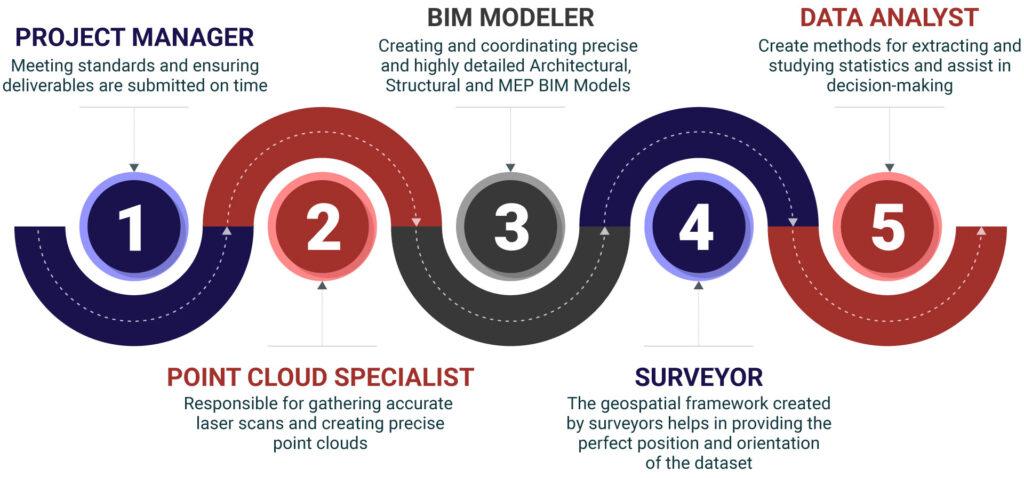
1. Project Manager
Through activity coordination and management, the project manager ensures the project team operates smoothly.
- Managing the risks associated with the present plans and wisely allocating resources are some of their main duties.
- Maintaining contact with customers and stakeholders.
- Ensuring the timely submission of deliverables and following standards.
2. Point Cloud Specialist
By using point clouds, the Point Cloud Expert is in charge of compiling extremely exact and precise information about an existing building. Planning laser scanning activities.
- Aligning several scans to register them into a single dataset after removing noise.
- Working together with people who develop BIM models to ensure accurate and comprehensive data.
3. BIM Modeler
The BIM modeler is the architect who brings the point cloud data, which has been translated into a comprehensive 3D intelligent BIM model to life. They shall undertake:
- Detecting conflicts by coordinating multiple building components inside the model, such as architectural, structural, and MEP components.
- Enriching the BIM elements with attributes and properties for better data management.
- Working closely with other team members to ensure the accuracy and completeness of the model.
4. Surveyor
The surveyor is an important person in a Scan to BIM project as he/she creates its geospatial framework. This expert provides a good positioning and orientation for the point cloud dataset. The following are their key responsibilities:
- Ground surveys that establish control points and reference markers should be done by them.
- Survey information must be connected to the point cloud so as to create a geo-referenced model.
- This will allow providing accurate measurement details required for making a BIM model on it.
- Field checks are conducted to confirm whether this BIM is accurate or not.
5. Data Analyst
The Data Analyst is accountable for deducing valuable information from the numerous data created during Scan to BIM. They perform a crucial function of changing unrefined data into employable knowledge, which includes:
- Creating methods for extracting and studying statistics
- Choosing relevant details through point cloud as well as BIM models
- Visualizations and reports that display or communicate findings
- Identifying any probable problems or incongruities in the dataset
- Delivering facts based on data to assist decision-making
Collaboration and Communication
Every member has an important role in sharing information, coordinating efforts, and ensuring alignment with project goals. To foster a transparent process for dealing with problems promptly, regular communication is maintained through meetings, progress reports, and project management software.
Promoting collaboration among teams will enable them to use each man’s knowledge on the subject while identifying potential pitfalls at an earlier stage as well as decision-making informed enough leading towards success in any given undertaking like a project.
Challenges and Best Practices
Scan to BIM is an amazing technology that can be used in an AEC project, but at the same time, it has its own problems, such as errors in data, complications from point cloud processing, compatibility with other software and allocation of resources. Effective project management and advanced software tools are necessary to address these obstacles.
It is important for any successful Scan to BIM projects to have a well-defined project scope, stringent data capture practices, reliable quality assurance measures and continuous training for the team members. By sticking to these guidelines as well as utilizing the latest technologies, firms can maximize their gains from Scan to BIM initiatives
Conclusion
A well-structured team having project management, point cloud analysis, BIM modelling, surveying and data analytics experts is the driving force behind successful Scan to BIM projects. Each player in the chain is of great importance as far as transforming built conditions into useful BIM models with accuracy and efficiency are concerned. To beat challenges and reach set goals it is vital that there must be good cooperation, communication and adherence to standards. The construction industry will transform with time and Scan to BIM will play a bigger role in supporting it through innovation and better project results.

